Adventure cyclist Markus Stitz maps out 20 wild, “off-the-beaten-track” routes in his new book, Bikepacking Scotland.
He shares his favourites with Gayle Ritchie and talks about why Scotland’s progressive access rights have helped bikepacking boom.
Hills, glens, rugged coastlines, islands, beaches – Scotland is an absolute haven for bikepacking.
And Markus Stitz, founder of Bikepacking Scotland, wants to share some of his secret, off-the-beaten-track routes, with cyclists of all abilities.
His new book details 20 multi-day wild adventures across the country, with suggestions in the Highlands, Moray, Perthshire, Fife, Angus, Aberdeenshire and beyond.
For those not in the know, bikepacking is pretty much the same as cycle touring – heading off on your bike with everything you’ll need to spend the night, or a few nights, strapped to your bike. The trick is to keep things as lightweight as possible.
Markus, who hails from Germany, knows Scotland’s back roads and tracks better than most, having lived here since 2009, and has spent years exploring the country on two wheels.
He’s hugely appreciative of our “progressive” access rights, which, coincidentally, celebrate their 20th anniversary this year, with the establishment of The Scottish Outdoor Access Code in 2003.
“While there are a few exceptions, broadly speaking you can ride your bike and camp everywhere in Scotland – as long as you do so responsibly,” says the 43-year-old.
Favourite corners of Scotland
The plan for his new book was not to produce a “best of” list of routes, often found in “mainstream guidebooks”, he says.
Instead, he’s taking people to his favourite corners of Scotland, many of which are little-known.
The routes are suitable for beginners and experts alike, and are accessible by bike-friendly transport options.
You will fondly remember the first time you sink your feet into a bog, or when a cloud of midges surrounds you. But you will also be blown away by the wonderful scenery.”
They take in a good variety of trails: in the Ayrshire Alps, Dumfries and Galloway, and the Borders; along Perthshire’s drovers’ roads; the grand architecture of the Central Belt; ferry-hopping adventures around Argyll, including Islay, and Jura and Mull.
There are multiple routes across the Highlands, with an epic tour of the Cairngorms National Park as well as Markus’ own take on the North Coast 500.
Discover Scotland
“For me, cycling is one of the purest ways to discover Scotland off the beaten track, leaving no other trace than a few tyre marks,” he reflects.
“All the bikepacking adventures I’ve had in Scotland have created lasting memories.”
He does admit, however, that Scotland isn’t always an easy country to cycle in, thanks to its weather, challenging landscape, and bloodthirsty midges.
He laughs: “You will fondly remember the first time you sink your feet into a bog, or when a cloud of midges surrounds you. But you will also be blown away by the wonderful scenery.”
With so many stunning routes to choose from, it’s hard for Markus to choose absolute favourites, and he reiterates that his book is really just a snapshot.
Cateran Gran Fondo
However, he’s a huge fan of the ‘Cateran Ecomuseum’, an outdoor museum straddling Angus and Perthshire “without walls”, where all the sites are free,
Within this “ecomuseum”, Markus has devised his ‘Cateran Gran Fondo’ road bike adventure, describing it as “the most universal” of bikepacking journeys featured, as it can be ridden on any bike.
The loop starts at Alyth in Perthshire, passes through Bamff Estate, an upland farm which has been pioneering environmental restoration since the 1980s, including the reintroduction of beavers in 2002, and heads along the Cateran Trail, passing Forter Castle, Kirkmichael, Kirkton of Glenisla, and Loch of Lintrathen.
It eventually curls back to Kirkton of Kingoldrum, and then Meigle, where you can explore the sculptured stones, and finishes up in Alyth.
From Forth to Fife
Markus is also a massive fan of his ‘From Forth to Fife’ route, which was inspired by a film project he did with Forth Bridges Tourism.
Starting from Edinburgh, this route is ideal for a “micro adventure” or a family bikepacking trip.
En route, cyclists will take in the Firth of Forth’s magnificent bridges, stunning woodlands and two lochs.
Drovers’ roads
Another route, which Markus calls ‘Discovering Perthshire’s Heritage’, retraces the footsteps of cattle drovers on their journey from the Cairngorms through the Tay Valley to Crieff.
Coast to barrel
There’s an alternative North Coast 500 route – he wanted to create a route that offers people a shorter itinerary than the original route but still include highlights like the iconic Bealach na Ba, a pass through the mountains of the Applecross peninsula – and the “Coast to Barrel” route.
The latter starts at the railway station in Inverness and follows a stunning route through Moray and Speyside, into the Cairngorms National Park before following General Wade’s military road back into the city.
“I was able to test Coast to Barrel with good friends from Germany,” says Markus.
“None of them had been to Scotland, and experiencing the country by bike was an unforgettable experience for them.”
It’s been very much a case of using his imagination to link old tracks and trails together, and while most of them are rideable, there are a few which will need you to push your bike just a wee bit…
Adventure cycling bug
Markus caught the bug for adventure cycling while living in New Zealand between 2007 and 2009, but has made Scotland his home, creating routes for destination organisations, making films and writing for magazines.
He made his very first bikepacking trip in 2014 – the self-supported Highland Trail route – when the discipline was relatively unknown and, he says, “underground”.
He tackled the route, which explores 550 miles of some of the most remote, inhospitable terrain in the Scottish Highlands, on a single-speed bike.
After becoming the first person to circumnavigate the globe on a single-speed bike in 2016, Markus returned to Edinburgh to found Bikepacking Scotland.
Bikepacking community ‘a big family’
“What I love about the bikepacking community is that it’s like a big family where people know each other,” he says.
“It’s become much bigger but essentially it’s stayed a grassroots, friendly, welcoming community.”
Markus’ spirit of adventure and passion for bikepacking has proved inspirational for many people, keen to explore Scotland in a more sustainable, environmentally-friendly way.
“The sport is a great way of getting headspace. Bikepacking has allowed me to experience the rich history and natural heritage of the country with all my senses.
“It’s taken me to the corners of Scotland that the country is world-famous for, but without the need to travel with a metal cage around me.
“But, more often, cycling has taken me to places that don’t normally feature in other travel guides.”
Responsible access
It’s fitting that his book is published in a year Scotland celebrates the 20th anniversary of the right of responsible access – The Scottish Outdoor Access Code.
“In Scotland access is pretty straightforward,” reflects Markus.
“Forget about bridleways and footpaths – you can cycle pretty much everywhere, with a few common sense exceptions, including houses and gardens, other buildings and their yards or compounds, school grounds and places which charge for entry.
“Scottish access is based on three core principles, and not on an arbitrary system of different pathways: respecting the interests of others, caring for the environment and taking responsibility for your own actions.
“It is one of the most progressive countries in the world regarding access. And so its access rights, historic routes and climate make it one of the best countries in the world to enjoy bikepacking.”
As the organiser of two bikepacking events in Scotland, the Cateran Dirt Dash in August, and the Dunoon Dirt Dash in September, Markus says it’s encouraging to see that 34% of those taking part in the former are women.
Lake District-based Julia Richardson is gearing up for both events.
“I’ve been cycling since I came out of nappies – that was a long time ago!” she says.
“When mountain bikes came out in the late ’80s, I bought one and was hooked.
“I went on a few bikepacking trips through the Cairngorms but yearned for longer distances to ride.”
That’s when she bought a gravel bike and met Markus, who she describes as a “true ambassador and inspiration” for gravel riding, which is, essentially, cycling big distances over unpaved roads.
“They have revolutionised cycling for me,” she enthuses. “It’s a year since my gravel bike arrived and I’ve clocked up more than 3,000 miles.”
Julia’s just completed one of the routes in Markus’ new book – the John Muir Way – having also tagged on Perthshire cycling legend Mark Beaumont’s ‘Explore your Boundaries’ route, which featured in a documentary made by him and Markus.
“Both routes have been tough in their own rights but amazing experiences,” she says. “So I now want to ride everything!”
- Bikepacking Scotland by Markus Stitz is published by Vertebrate Publishing, priced £20. bikepackingscotland.com
- To support low-carbon travel choices, the book has been researched with public transport in mind. It features a comprehensive introduction to bikepacking in Scotland, from details on historic routes and the Scottish Outdoor Access Code to information on what to pack, what to wear and safety information. There are also insights from Scottish cyclists including Jenny Graham and Mark Beaumont, as well as Alan Goldsmith, creator of the Highland Trail 550.
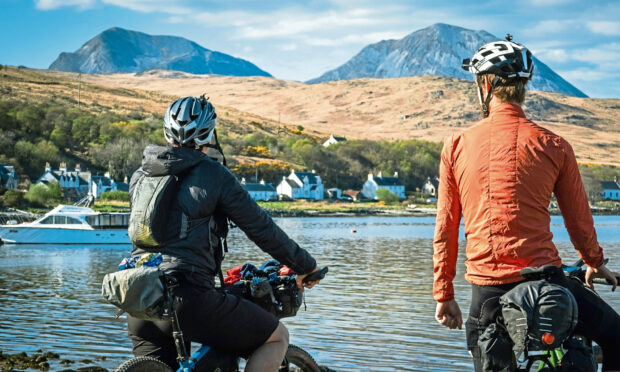
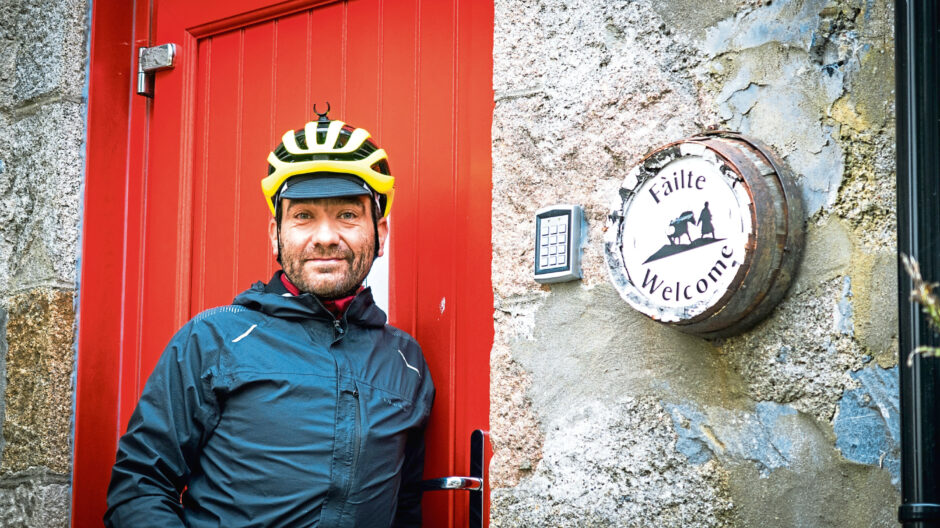
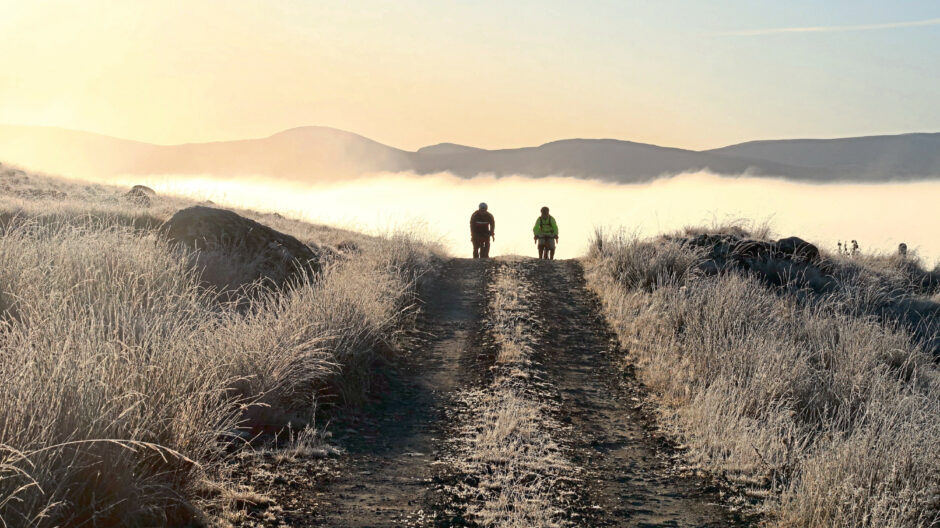
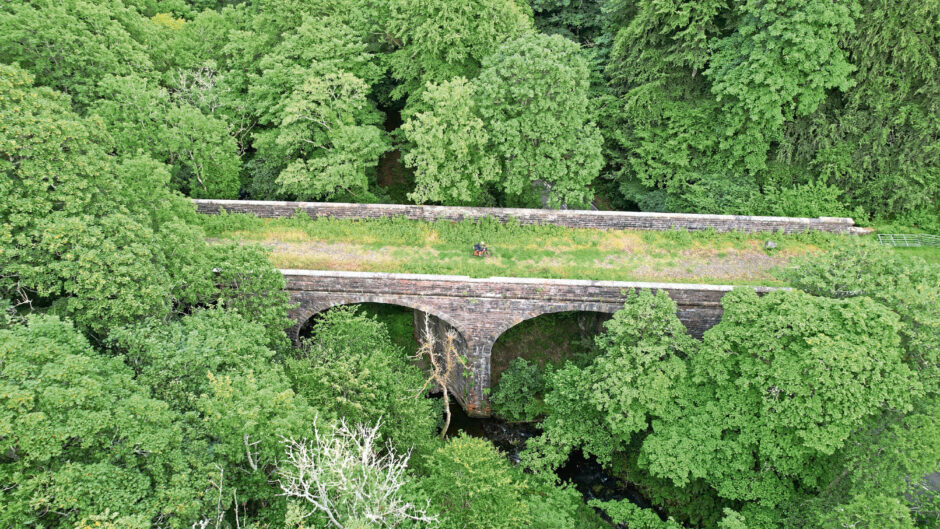
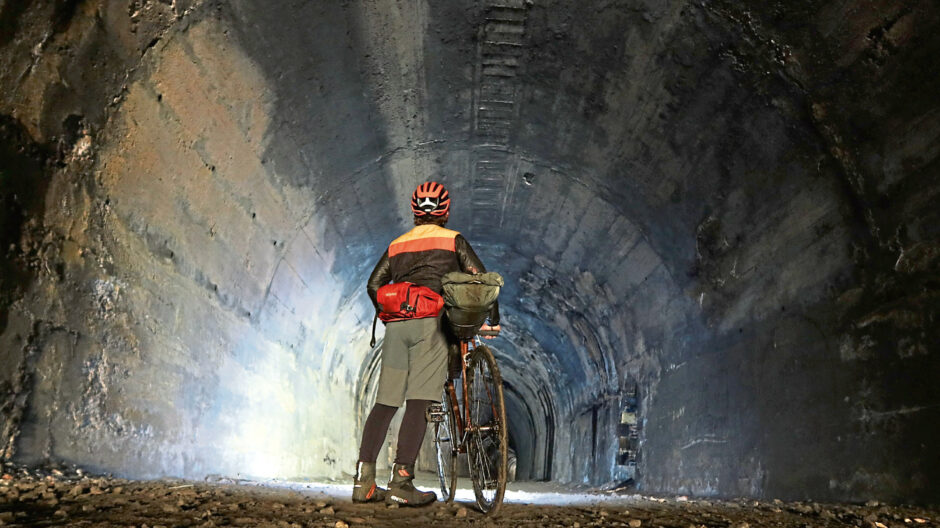
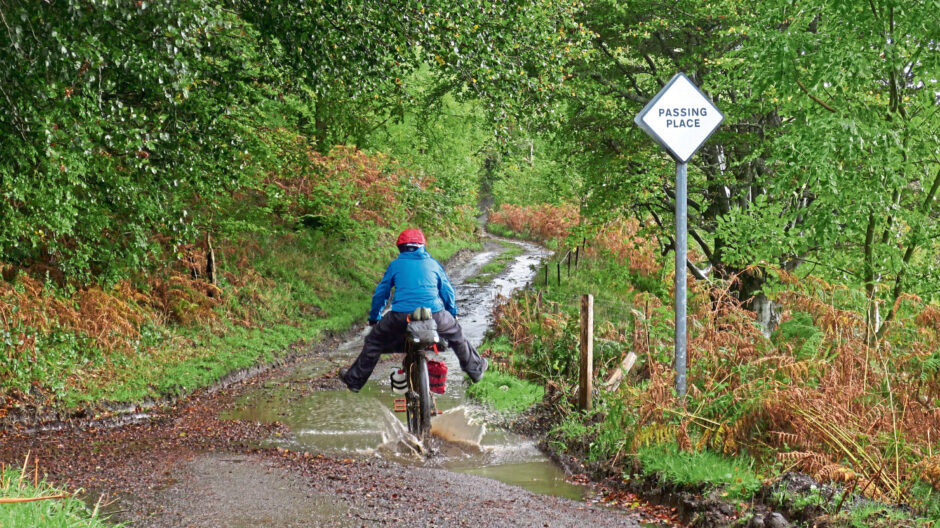
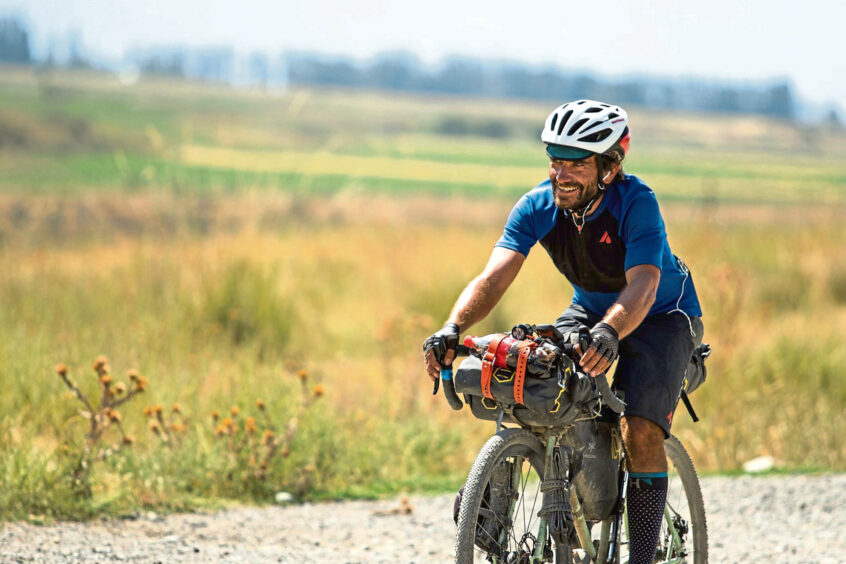

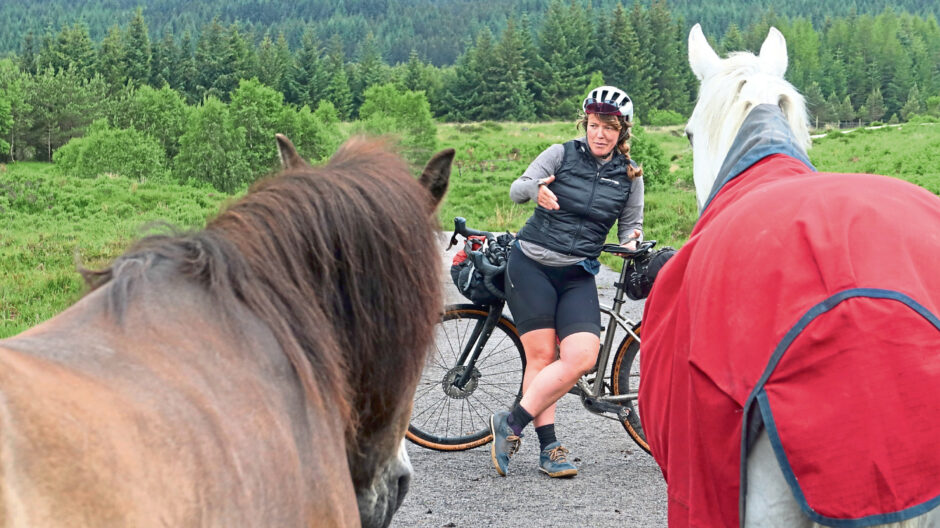
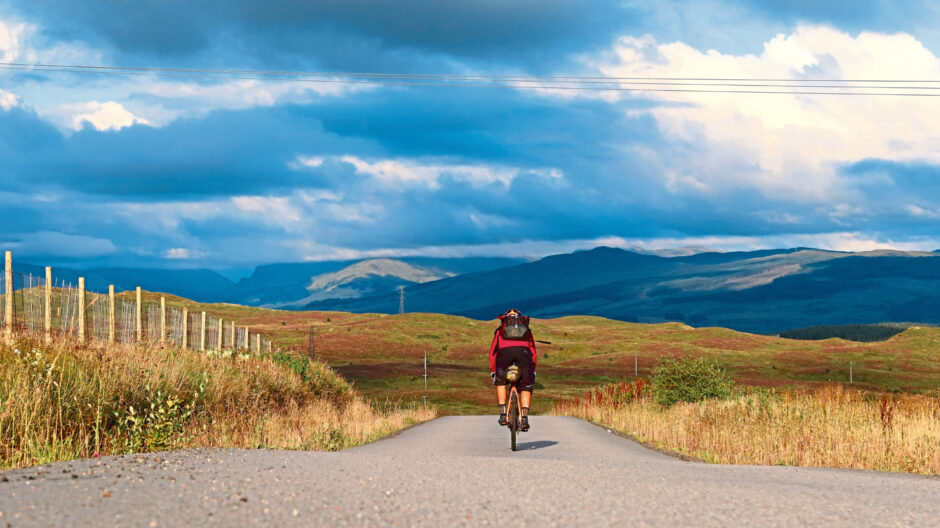










Conversation